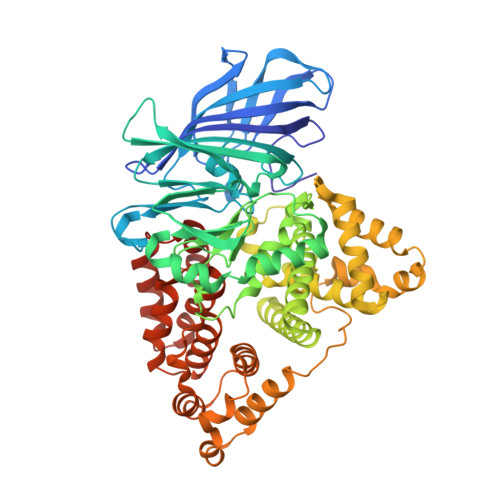The development of novel LTA4H modulators to selectively target LTB4 generation.
Low, C.M., Akthar, S., Patel, D.F., Loser, S., Wong, C.T., Jackson, P.L., Blalock, J.E., Hare, S.A., Lloyd, C.M., Snelgrove, R.J.(2017) Sci Rep 7: 44449-44449
- PubMed: 28303931
- DOI: https://doi.org/10.1038/srep44449
- Primary Citation of Related Structures:
5N3W - PubMed Abstract:
The pro-inflammatory mediator leukotriene B 4 (LTB 4 ) is implicated in the pathologies of an array of diseases and thus represents an attractive therapeutic target. The enzyme leukotriene A 4 hydrolase (LTA 4 H) catalyses the distal step in LTB 4 synthesis and hence inhibitors of this enzyme have been actively pursued. Despite potent LTA 4 H inhibitors entering clinical trials all have failed to show efficacy. We recently identified a secondary anti-inflammatory role for LTA 4 H in degrading the neutrophil chemoattractant Pro-Gly-Pro (PGP) and rationalized that the failure of conventional LTA 4 H inhibitors may be that they inadvertently prevented PGP degradation. We demonstrate that these inhibitors do indeed fail to discriminate between the dual activities of LTA 4 H, and enable PGP accumulation in mice. Accordingly, we have developed novel compounds that potently inhibit LTB 4 generation whilst leaving PGP degradation unperturbed. These novel compounds could represent a safer and superior class of LTA 4 H inhibitors for translation into the clinic.
Organizational Affiliation:
Computational Drug Design Consultant, Dulwich, London SE21 8LS, United Kingdom.



















